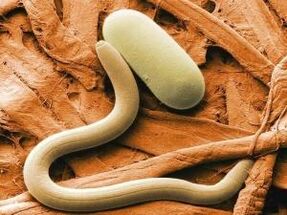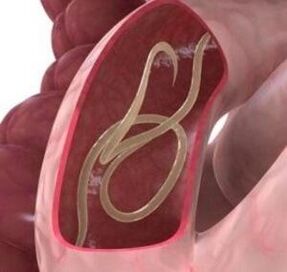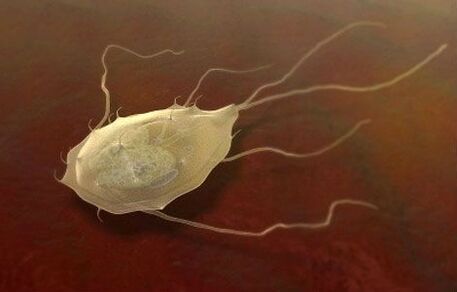How does infection occur?

- through unwashed hands
- After contact with soil
- After an insect bite
- Because hands are dirty
- When eating raw meat and fish
- After eating unwashed fruits and vegetables
- after contact with animals
- After contact with an infected person
Transmission through water is also possible. Many parasitic eggs easily fall into open reservoirs and wells. Drinking unboiled well water is extremely dangerous.
Types of helminthiasis
- biological worm
- soil worm
- contagious
Stages of helminthiasis

- translucent
- fabric
- Spicy
- chronic
Classification of worms

- flatworm
- roundworms
- Flukes (opistosoma, schistosomiasis, paragonimiasis)
- Tapeworms (Lathyoma solium, Echinococcus solium, Alveolar tapeworm)
- Roundworms or nematodes:
- Pinworm
- roundworms
- hookworm
- Trichinella spiralis
fluke
Metatesticular disease
- allergy
- weakness
- Headache
- Dizziness
- frustrated
- loss of consciousness
- parasitic waste poisoning
- liver tissue damage
- gallbladder damage
- Impaired bile outflow
- pancreatic inflammation
- secretory dysfunction
- Decreased gastric motility
- The walls of some organs thicken, leading to the development of tumors.
- Feeling heavy after eating
- pain
- Vomit
- nausea
Schistosoma

- Loss of appetite
- anemia
- enlarged liver
- altered spleen
- Reduced intestinal motility
- stomach ache
- constipate
- diarrhea
- lose weight
- Intestinal bleeding
- pain during urination
- allergy
- weakness
- Irregular menstruation and miscarriage in women
- Male impotence and incomplete ejaculation
- acute cerebral schistosomiasis
- chronic brain injury
- die
paragonium

- temperature rise
- cough
- The production of phlegm from the lungs when you cough
- Difficulty breathing
- In severe cases, sputum contains blood and parasite eggs
- A wheezing sound can be clearly heard in the patient's lungs
Tapeworm
Echinococcus
- weakness
- Dizziness
- Allergic reaction to parasite waste.
- brain
- spinal cord
- Eye
- thyroid
- liver
- lung
- Uterus
Nematodes
Pinworm

- itching
- diarrhea
- stomach ache
- Headache
- Loss of appetite
roundworms
- nausea
- Vomit
- jaundice
- pancreatitis
- Frequent acute respiratory infections
- bronchitis
- pneumonia
- handwashing
- Wash vegetables and fruits
- maintain personal hygiene
- Protect food from flies, cockroaches and other carriers.





















